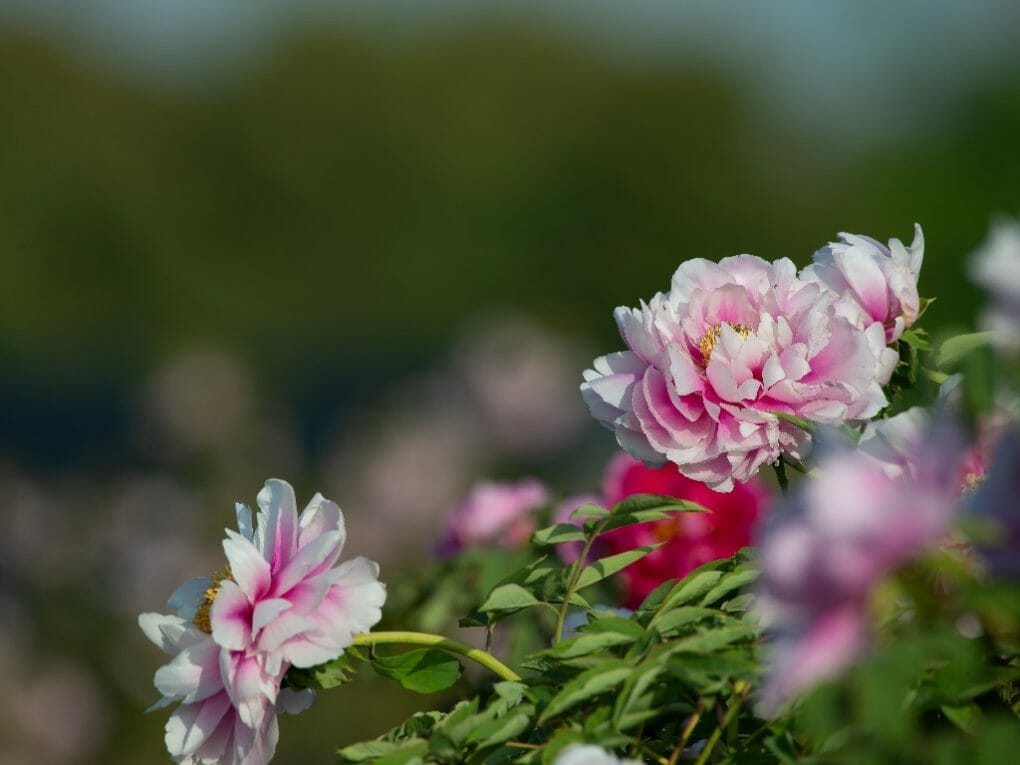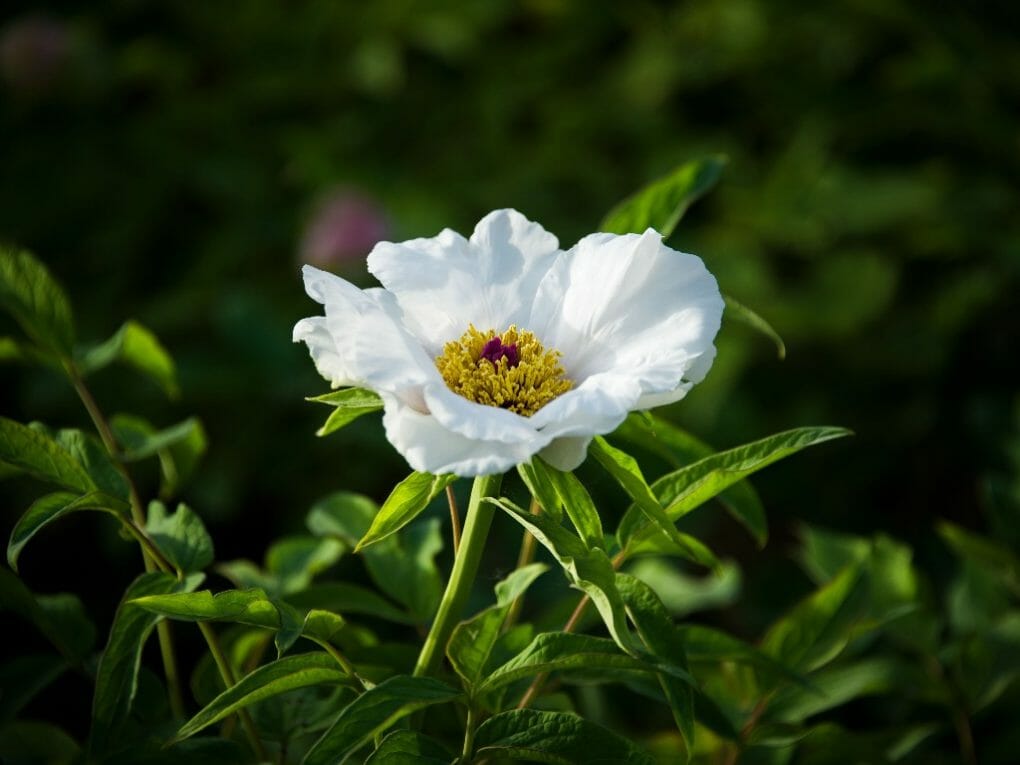When To Cut Back Peonies? Is It Necessary to Prune Peonies?

Peonies typically should be cut back in the spring and again in early fall, when they are starting to become overcrowded. The right time to do different trimming tasks differs by peony species due to their vastly varied shapes. Peonie flowers add classic beauty to any garden with their abundant blossoms in bright pink, white, and red hues.
Adaptable to the United States, common garden peonies (Paeonia lactiflora) are herbaceous plants that emerge from the ground fresh each spring. Zones 3 through 8 on the Department of Agriculture’s plant hardiness scale are those where there are at least 400 hours per year with temperatures below 40°F. The same-looking blossoms can be seen on tree peonies (P. suffruticosa), which are woody, deciduous shrub that slowly develops up to 10 feet tall. Tree peonies are hardy up to USDA zone 9, with no necessity for a chill to blossom.
Table of Contents
Is It Absolutely Necessary to Prune Peonies?
Peonies are pruned primarily for the sake of the plant’s health, although the practice is also done for reasons related to aesthetic concerns. Peony diseases can be managed by removing diseased foliage during the growing season and then pruning the entire plant in the fall after the growing season has come to an end. This will help prevent the spread of the disease.
The time of year you live in (as indicated by the USDA’s plant hardiness zone map) can affect when you prune your peony so that they bloom at the optimal time for your region. Peonies have a wide range of hardiness and can be cultivated in zones 3-9.
Peonies have a variable growing season, from April to June, depending on latitude.

Pruning After Blooming
After the flowers bloom, the first thing you need to do is trim them. After flowering, seeds actually start to form, which necessitates a lot of energy and nutrients from the plant.
Therefore, removing the faded flowers will result in a luxuriant bloom next year. Do not keep the blossoms on the stalks for longer than a week. Cut them as soon as they start to fade.
There are many different types of peonies available nowadays. Some of them flower in the spring, some in the first half of the summer, and some even do so in the fall. It’s time to cut the flowers as soon as they start to wilt.
One or two inches below the blossom is where you need to make the cut. In other words, you must remove the flower and its stem from the first leaf node.
The peony’s main stems and leaves shouldn’t be pruned right now. To save energy for flowering the next year, the plant will still require its foliage.
At the end of the growing season (fall), when the stems and leaves start to turn yellow, peonies should be clipped at ground level.
Additionally, only use good pruning shears. The tool should be thoroughly sharpened and antiseptic-soaked before use. You may cut off the dead peony flowers, but the foliage should remain intact. The plant needs all of its leaves to produce next year’s flowers. Similarly, you can clip off Stella d’Oro’s flower stems when a bloom cycle is complete. However, do not prune the foliage.
Consider growing a clematis beside the peonies. Later in the season, the clematis can climb through the peony leaf for support and blossom in the same location.
Early Season Pruning
Prune suckers emerge from a tree peony’s base in the early spring. You can let any of these sprouts mature if they fill in a barren space. At this time, prune any tree peony branches that are dead or damaged by wood. As long as they cleaned up their gardens in the fall and removed any dead plant debris from the area around the plant’s crown, gardeners who grow herbaceous peonies can relax in the early spring. In the spring, fresh, dark red herbaceous peony branches appear from the bare ground without needing to be pruned.
Seasonal End Pruning

Even if the leaf on herbaceous peonies doesn’t look appealing, leave it there until late October. Similar to bulb foliage, it is storing energy for the growth of the following season. In late October, cut the plant to the ground and add the cuttings to the compost. Rake up any leaves that have fallen around tree peony. This is also the time to remove any crossing branches or branches that give the plant an unattractive appearance, especially if the plant’s base has grown scant. Like any woody shrub, the base of the branch or immediately above an outward-facing bud or lateral branch should be cut at a 45-degree angle.
Flower Care
Herbaceous peonies’ flexible new growth makes it challenging for the plant to sustain its full-petaled flowers, and they occasionally fall to the ground, especially after a shower. Dis-budding produces more, but smaller flowers, which the plant is better equipped to support. This springtime technique involves pinching off the center flower bud on each stalk when it is about the size of a marble. It’s not necessary to de-bubble tree peonies. However, as both types bloom in the late spring, faded blooms should be removed right away to maintain the plant looking good and to reduce the chance that disease will spread through a decaying blossom and into the stem. After deadheading, peonies do not blossom again.
Pruning for Health
Both kinds of peonies can be affected by botrytis blight, but the consequences are more noticeable in herbaceous peonies, whose new growth might suddenly wilt and turn brown. However, this can also happen to tree peonies’ new growth. Additionally impacted are flower buds and blooming flowers, with the stems collapsing right beneath the bud. When conditions are moist, a white fuzzy mold grows and the bud turns dark and refuses to open. When botrytis blight symptoms appear, cut off the afflicted area of the plant and discard it rather than composting it. Rose borer, an insect that produces tiny holes in the wood and makes branches wilt, can also infest tree peony wood. As soon as you notice damage, remove it by cutting a few inches beyond the area to the nearest leaf bud or branch.
